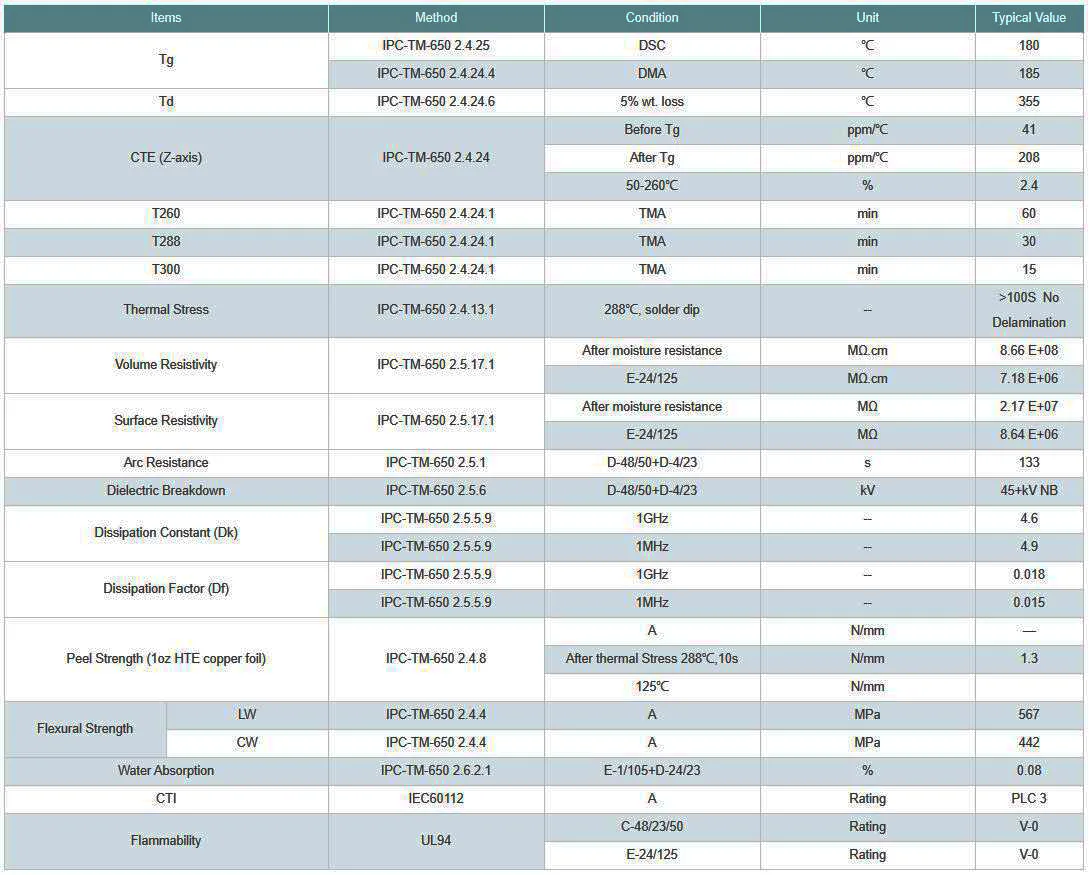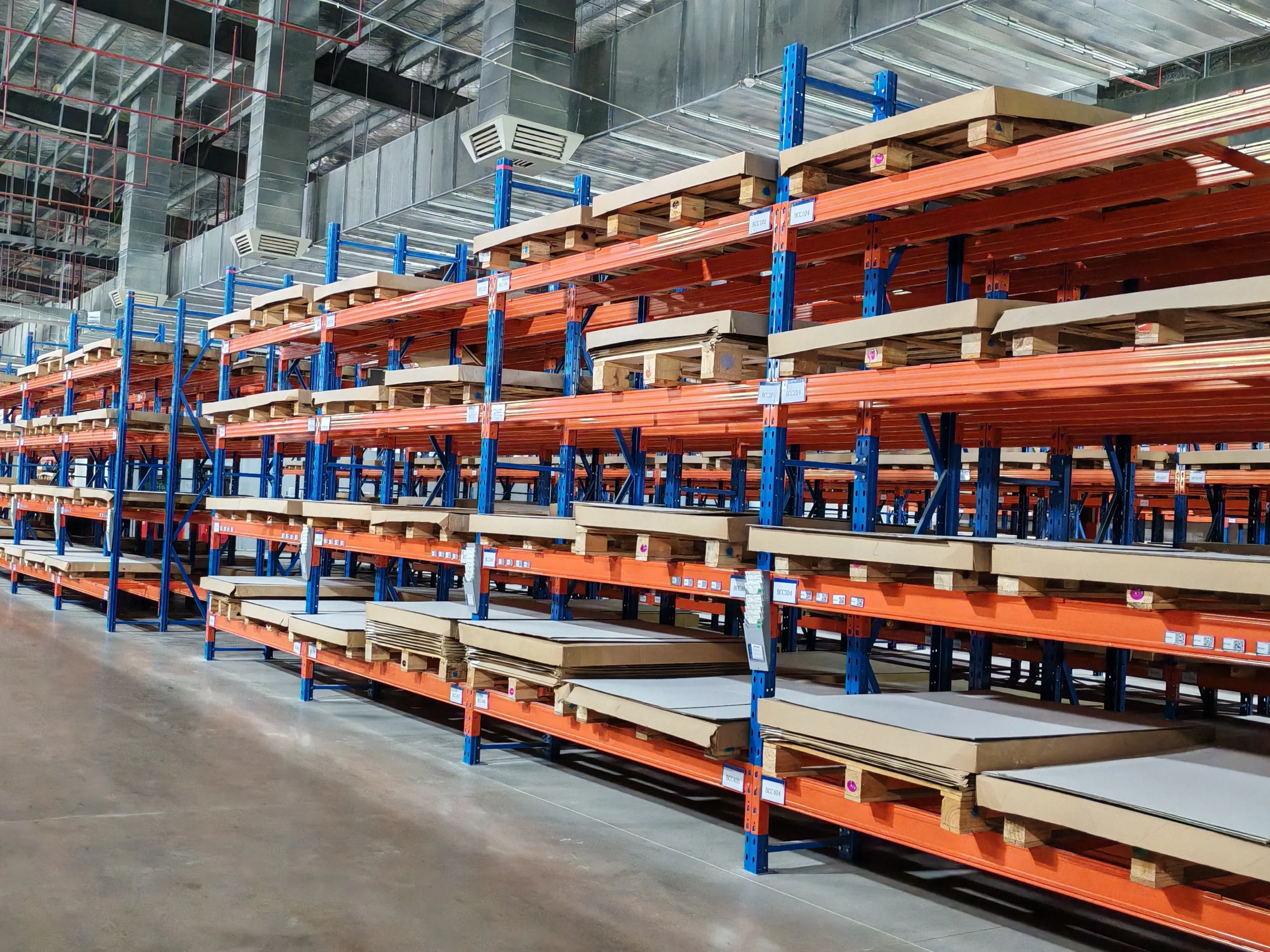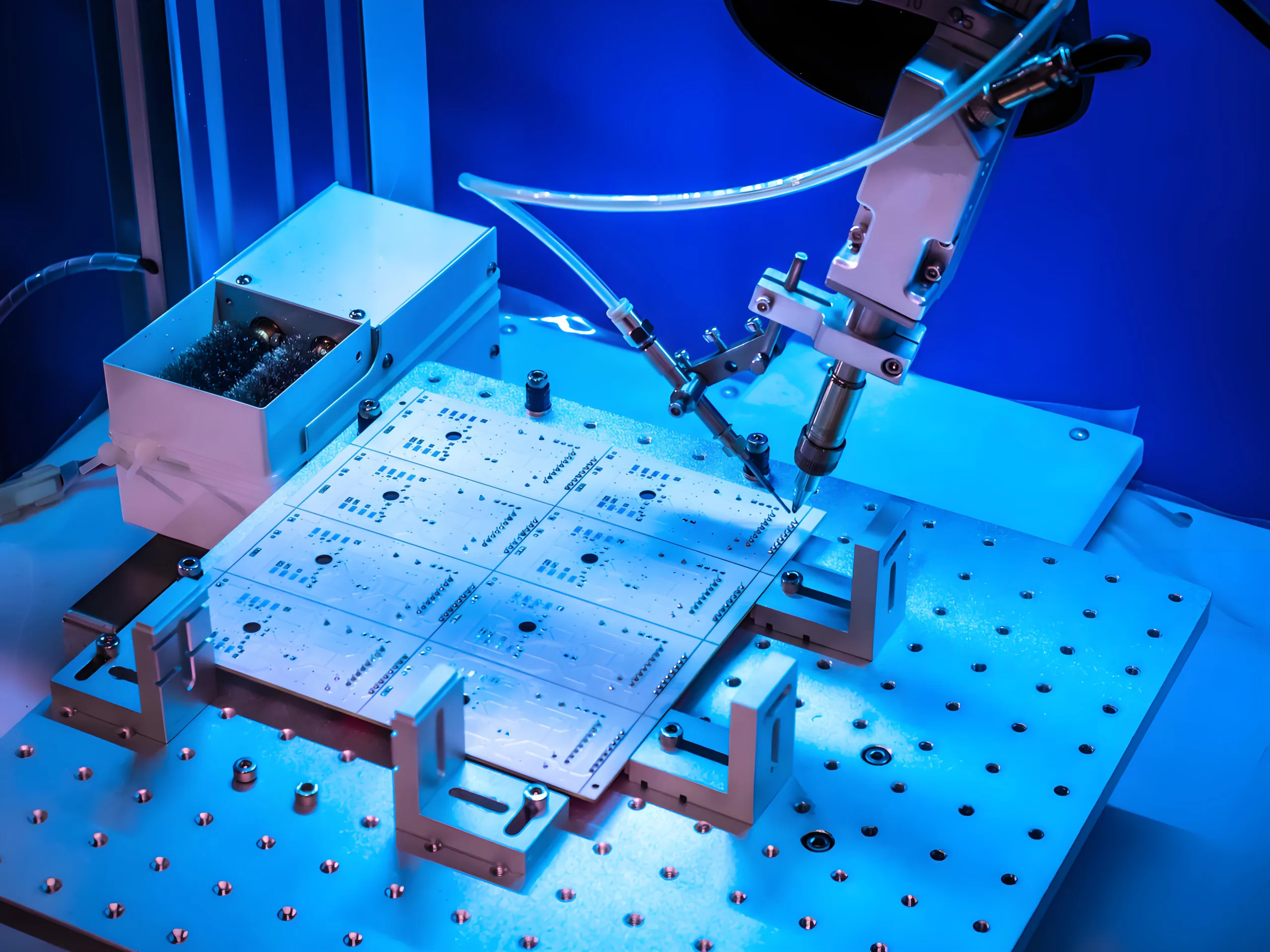S1000-2M is a PCB material of Shengyi Technology and high Tg FR-4 (above Tg170 ℃). It has the ability to adapt to high multilayer without lead, and is widely used in automobiles, HDI and various high-end electronic circuit boards in the industry S1000-2M is characterized by stable performance, convenient processing and fast delivery.
S1000-2M features
– Lead-free compatible FR-4 PCB
– High Tg170 ℃ (DSC), UV Blocking/AOI compatible
– High heat resistance
– Low Z-axis thermal expansion coefficient
– Excellent through-hole reliability
– Excellent Anti-CAF performance
– Low water absorption and high temperature and humidity resistance
– Excellent machining performance

TG S1000-2M PCB Substrate Performance Parameters
S1000-2M application field
– Suitable for high multilayer PCB
– 컴퓨터에 널리 사용됨, communications and automotive electronics
S1000-2M and S1000-2MB PCB Manufacturing Guid
1. S1000-2M PCB Material Storage conditions
1.1 Copper clad plate
1.1.1 Storage method
Put it on the platform or appropriate rack in the original packaging form to avoid heavy pressure and deformation of plates caused by improper storage.

Raw Material Warehouse
1.1.2 Storage environment
The plates should be stored in a ventilated, dry and room temperature environment to avoid direct sunlight, rain and corrosive gas (the storage environment directly affects the quality of the plates).
The double panel can be stored for two years in the appropriate environment, and the single panel can be stored for one year in the appropriate environment. Its internal performance can meet the requirements of IPC4101 standard.
1.1.3 Operation
Use cleaning gloves to handle the plates carefully. Collision, sliding, 등. will damage the copper foil, and bare hand operation will pollute the copper foil surface. These defects may have a negative impact on the use of the plate.
1.2 Semi curing sheet
1.2.1 Storage method
The prepreg shall be stored horizontally in the original packaging to avoid heavy pressure and damage caused by improper storage. The remaining roll shaped prepreg cut out shall still be sealed and packaged with fresh film and put back on the bracket in the original package.
1.2.2 Storage environment
The prepreg shall be stored in a sealed package in an environment free from ultraviolet light. The specific storage conditions and storage period are as follows:
상태 1: temperature<23 ℃, relative humidity<50%, storage period of 3 months,
상태 2: temperature<5 ℃, storage period is 6 months.
The relative humidity has the greatest impact on the quality of the prepreg, which should be paid attention to (the corresponding dehumidification treatment should be carried out when the weather is wet). It is recommended to use the adhesive sheet within 3 days after opening the package.
1.2.3 절단
The cutting should be carried out by professionals wearing clean gloves to prevent the surface of the prepreg from being polluted. The operation should be careful to prevent the prepreg from wrinkling or crease, and avoid the impact on the use of the prepreg.
1.2.4 지침
When the prepreg is taken out of the cold storage, it must go through the temperature recovery process before opening the package. The temperature recovery time is more than 8 hours (depending on the specific storage conditions). The package can be opened after the temperature is the same as the ambient temperature.
PP that has been opened into sheets shall be stored under Condition 1 or Condition 2 and used up as soon as possible. If it exceeds 3 날, it must be rechecked and used after its indicators are qualified.
After the package of rolled PP is opened, the remaining rolled tail parts shall be sealed to the original packaging level and stored in Condition 1 or Condition 2.
If there is an IQC inspection plan, the adhesive strips shall be tested as soon as possible after receipt (no more than 5 날) according to IPC-4101 standard.
If the sheet PP is dehumidified before use, it is recommended that the setting of the dehumidification cabinet should be<20 ℃, the humidity should be about 40%, and the upper limit of the fluctuation should not exceed 50%.
2. S1000-2M PCB processing suggestions

PCB processing
2.1 절단
It is recommended to use sawing machine for cutting, followed by shearing machine. Note that cutting with roller knife may lead to plate edge delamination.
2.2 Core plate baking
The core plate can be baked according to the actual use situation. If the core plate is baked after cutting, it is recommended that the core plate be baked after high-pressure water washing after cutting to avoid the introduction of resin powder to the plate surface during the shearing process, which may cause poor etching.
Drying conditions: 150 ℃/4~8h. Note that the plate cannot directly contact the heat source.
2.3 Stacking
The stacking process shall ensure that the stacking sequence of the bonding sheets is consistent, and avoid reverse or overturning action to avoid warping and deformation.
2.4 라미네이션
It is recommended that the heating rate should be 1.0~2.5 ℃/min (the material temperature should be within the range of 80~140 ℃) during multilayer laminate.
300-420PSI (hydraulic press) is recommended for the high pressure of lamination. The specific high pressure needs to be adjusted according to the structural characteristics of the plate (the number of prepreg and the size of the glue filling area).
It is recommended to turn the outer material temperature to high pressure at 80-100 ℃.
Curing condition: 185-195 ℃,>60분.
If the copper foil heat conduction press is used, we need to be informed in advance.
If insulating boards or single panels are used in multilayer boards, the insulating boards or single panels need to be roughened before being used to avoid insufficient bonding force caused by too smooth insulating boards, or double-sided boards can be etched into single panels or insulating boards for production.
2.5 교련
The plate is relatively hard and the drilling efficiency is low. It is recommended to reduce the hole limit of the drill nozzle appropriately to ensure good hole wall quality. On the basis of common FR-4 drilling parameters, it is recommended to reduce the falling speed by 10-20%.
2.6 Desmear
Since S1000-2M resin has inorganic filler added, which is difficult to bite, Desmear needs to be strengthened. 게다가, ultrasonic water washing is required for Desmear boards. Drying after drilling is conducive to strengthening Desmear effect, which can be selected according to the actual effect at 150 ℃/4h.
2.7 Soldering resistance ink
When using the rack for baking, if the plate is squeezed or deformed when inserting the rack, warping will occur after baking.
2.8 Tin spraying
It is applicable to the lead-free tin spraying process. If there is a white spot problem, it is recommended to bake at 150 ℃ for 2-4h and then spray within 4h.
2.9 Profile processing
Not suitable for punching/tablet processing,
Inorganic fillers have great wear on gongs and gongs, and the length of gongs edge is obviously reduced, so it is necessary to reduce the travel speed appropriately.
2.10 포장
It is recommended to dry the plate before packaging under the condition of 125 ℃/4-8h to avoid the heat resistance degradation caused by moisture.
If PCB boards need to be stored for a long time before use, aluminum foil vacuum packaging is recommended.
3. S1000-2M PCB Welding
3.1 Packaging validity
Recommended within 3 months,
It is better to bake the components at 125 ℃ for 4~8h before assembly.
3.2 Recommendations for reflow welding parameters
Suitable for normal lead-free reflow soldering processing conditions.
3.3 Suggestions on manual welding parameters
For individual pads or edge pads
The welding temperature is 350~380 ℃ (using a temperature-controlled soldering iron)
Welding time of single welding point: within 3 초
 UGPCB 로고
UGPCB 로고


